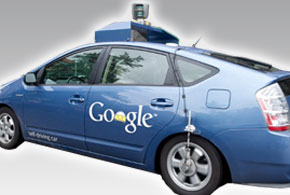Earlier this year, I found myself speaking with a number of automotive industry experts about self-driving vehicles. Most said that while the technology is rolling forward, it will be a couple of decades until we see self-driving cars in any substantial way.
At this point, a reality check may be in order. Tesla has gained a great deal of notoriety for its autopilot feature, which has now logged more than 130 million miles. And Google recently hit the 2-million-mile mark with its self-driving car. It now logs about 25,000 miles per week.
But recent news from Ford Motor is the real eye-opener. In August, the automaker announced that it plans to produce fully autonomous vehicles by 2021. These cars will not have steering wheels, brake pedals and other controls humans have grown accustomed to over the last century.
What’s more, it will manufacture these cars in high volume, and they will be tailored to ride-sharing and ride-hailing services, such as Uber, Lyft and ZipCar.
The disruption will be enormous—for motorists, the insurance industry and the legal system. As Michael Macauley, CEO of Quadrant Information Services, a supplier of pricing analytics to insurance carriers, puts it: “This is a new world for insurers. The industry will need a whole new set of data tools to deal with this.”
Today, for example, the combination of a teenage driver, a Mercedes and a high-crime neighborhood could yield a radically different price for insurance than a middle-age driver with a spotless record in a quiet, safe neighborhood. If the older driver buys a Toyota or Honda, the difference could be even more pronounced.
But self-driving vehicles introduce a whole array of different factors. Suddenly, age and driving record are irrelevant. Traffic patterns, road conditions, climate and how well the car performs are what matter.
Ford is pursuing fully automated vehicles that would require zero human interaction. Google has taken the same path.
One interesting takeaway from industry research is that a hybrid approach, where the car could operate on its own or under human control, is a bad idea. Drivers tend to over-trust the system and become distracted at crucial moments. Instead, engineers are working on vehicles that require no human interaction.
Based on the rapidly deteriorating driving habits I observe, it can’t be too soon for self-driving vehicles to shift into full production.









